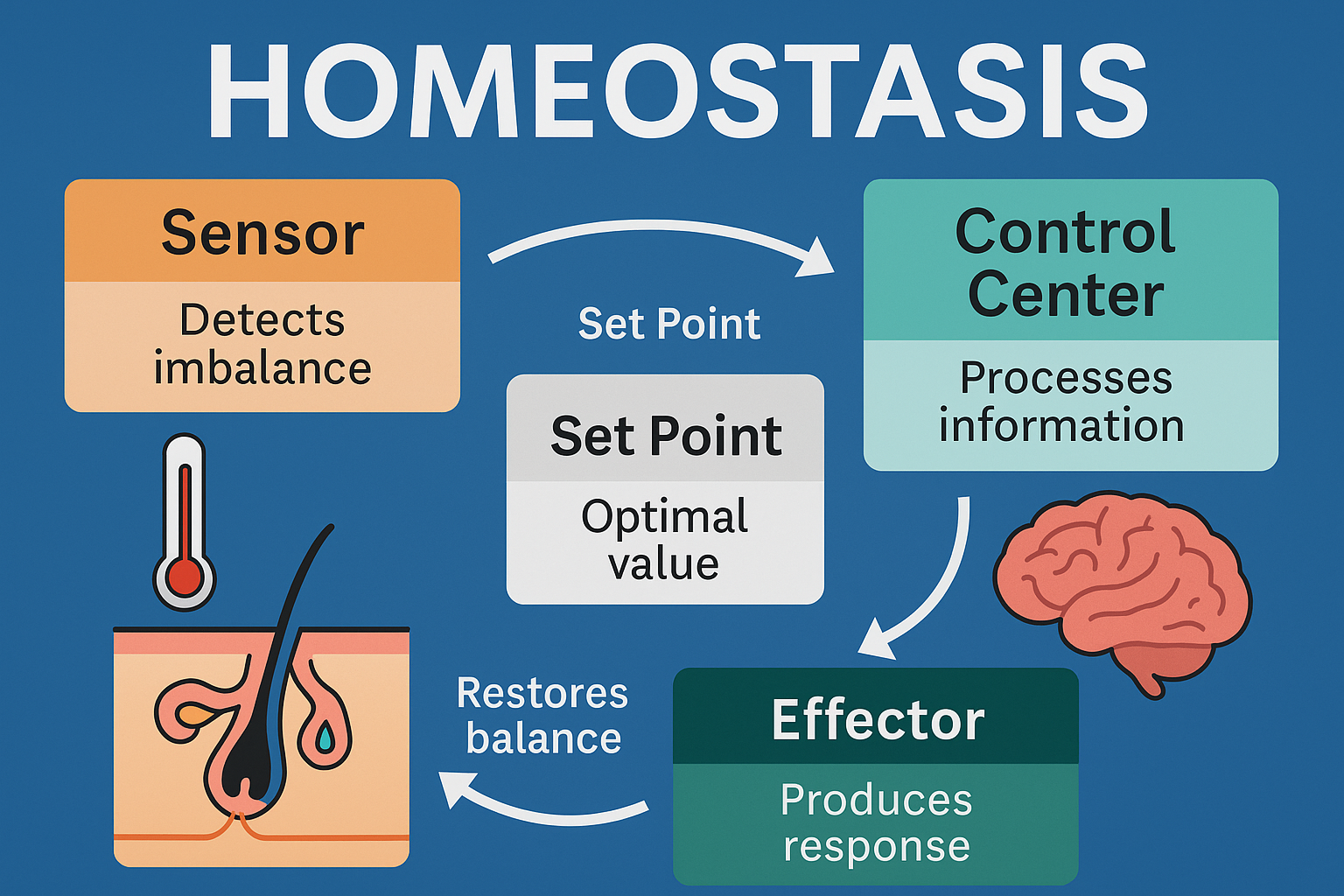Homeostasis: How the Body Stays in Balance – MCAT Essentials
Homeostasis is the process your body uses to keep internal conditions stable and within a narrow range. It’s the foundation of almost all physiological regulation and appears frequently on the MCAT in topics like blood glucose, temperature, osmolality, blood pressure, and more.
Let’s explore how your body maintains homeostasis—and how the MCAT might test it.
🔄 The Components of a Homeostatic System
| Component | Description |
|---|---|
| Sensor | Detects deviation from set point (e.g., thermoreceptor) |
| Control center | Processes signal (e.g., hypothalamus, pancreas) |
| Effector | Produces response to restore balance |
| Set point | Optimal level (e.g., 98.6°F for body temp) |
🧠 MCAT Tip: These elements form the basis for feedback loops (especially negative feedback).
💡 Mnemonic: “My Chicken Hez TB” (Airborne)
| System | Set Point Controlled | Hormonal Regulator | Effector Response |
|---|---|---|---|
| Blood glucose | ~90 mg/dL | Insulin ↓ / Glucagon ↑ | Liver stores or releases glucose |
| Temperature | 98.6°F (37°C) | Hypothalamus | Sweating / shivering |
| Blood osmolality | ~300 mOsm/kg | ADH (vasopressin) | Kidney adjusts water reabsorption |
| Blood calcium | ~9–10.5 mg/dL | PTH ↑ / Calcitonin ↓ | Bone resorption or deposition |
✅ The MCAT tests these in hormonal axis questions, passage graphs, and deficiency scenarios.
🧪 MCAT Application Example
✅ Sample Question:
“A patient with excess ADH secretion will most likely show which effect?”
Answer: ↑ Water reabsorption → ↓ Plasma osmolality → Disruption of homeostasis
✅ Passage Prompt:
“Temperature increase triggers sweat gland activation...”
→ Sensor (thermoreceptor), effector (sweat gland), and control center (hypothalamus)
🧠 Final MCAT Tips
Homeostasis ≠ equilibrium — it’s dynamic regulation
Understand set points and feedback systems
Know hormones associated with glucose, calcium, BP, and temperature
Recognize disruptions (e.g., diabetes, fever, dehydration)
✅ Call-to-Action (CTA)
From hormones to heat regulation, homeostasis touches almost every MCAT section. Learn it the KOTC way with concept maps, science visuals, and rapid-recall drills.
Frequently Asked Questions (FAQs)
-
Aim for 4-6 focused hours, ensuring you incorporate breaks to avoid burnout.
-
Practice mindfulness techniques, take practice exams under realistic conditions, and maintain a balanced lifestyle.
-
Set short-term goals, seek support from mentors, and reward yourself for small achievements.
-
Regular exercise improves focus, reduces stress, and enhances overall mental clarity.
-
KOTC offers personalized learning tools, gamification features, and adaptive question banks to help students stay on track without burnout.


